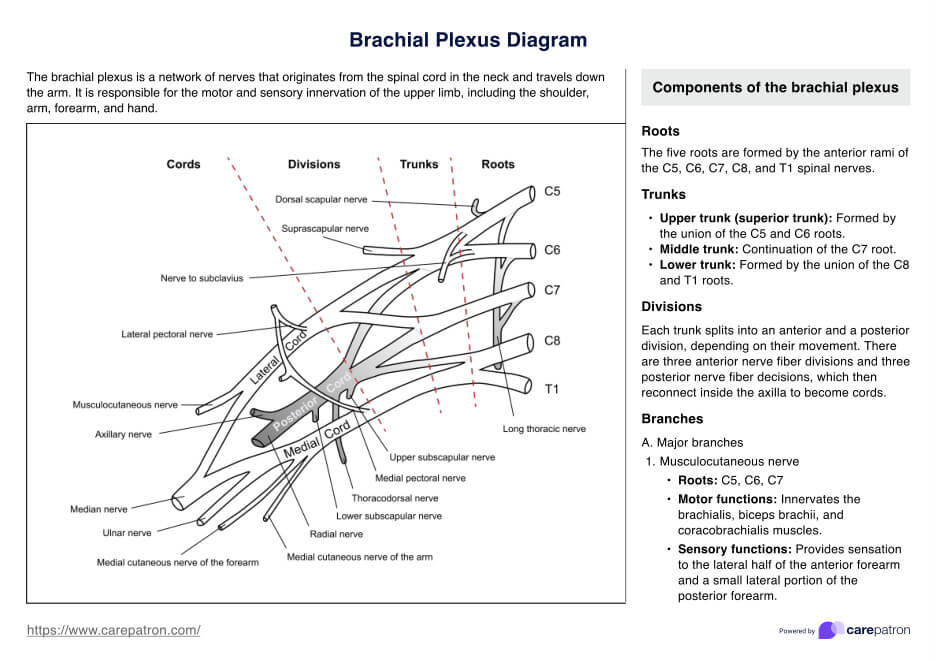The brachial plexus is located in the shoulder region, extending from the spinal cord in the neck (C5-T1) down to the arm.

Brachial Plexus Diagram
Understand the brachial plexus with our detailed diagram. Ideal for health professionals, patients, and medical students. Download our free template now.
Use Template
Brachial Plexus Diagram Template
Commonly asked questions
Brachial plexus pain is typically felt in the shoulder, arm, and hand, and can include symptoms like burning, numbness, or weakness.
Relief for brachial plexus pain can include physical therapy, medications, and in severe cases, surgical intervention to repair nerve damage.
EHR and practice management software
Get started for free
*No credit card required
Free
$0/usd
Unlimited clients
Telehealth
1GB of storage
Client portal text
Automated billing and online payments











